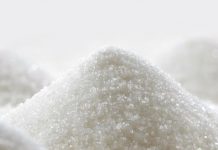Slow change in the energy matrix
The sugar futures market in NY closed out the week with October/2022 at 18.23 cents per pound, just an 8-point increase against last week, but it was the only maturity that showed positive variation.
The October/March spread (the difference between quotations of the two contracts) appreciated almost 7 dollars per ton over the week. What explains this spread appreciation, according to a market trader, is the rearrangement of the trading companies’ book anticipating the receipt of raw sugar to take advantage of the exceptional white premium (the difference between the refined sugar and raw sugar prices), which blew up to 187 dollars per ton. The faster the sugar receipt and the shipment to the destinations where it will be refined, the greater the margin of the refineries will be. The white premium will plummet to 116 dollars per ton in March/2023.
However, the market will have a difficult job to stay at the current price levels. The collapse of the hydrous price on the domestic market – which has turned the careful planning the mills did for this year upside down – encouraged the mills to produce more sugar. A selling pressure on the March/2023 contract to adapt to the production increase is expected. Meanwhile, hydrous (according to the ESALQ index) is trading at unimaginable 500-point discount against NY sugar.
The perspective of a drop in interest rates in Brazil on the part of the financial market which, according to Focus bulletin, projects it to be 11.25% at the end of 2023 and 8% at the end of 2024, flattens the curve of the NDF (Non-Deliverable Forward). In other words, the financial institutions are offering fewer real to traded dollars with longer maturities. The mills need to redo the calculations to figure out if it’s worth speeding up the pricing for 2024/2025, for example, because that means fewer real in the pocket, but there is still doubt about sugar production cost, which every day gets closer and closer to the values traded in NY.
It will be interesting to know how the market will respond over the next months. There is a plethora of variables and possible combinations which make the decision-making process more difficult. What we can easily deduce is that if the zero-tax situation should be kept, the mills will prefer the ethanol production and Brazil will strongly increase sugar production. As a consequence, the sugar market in NY can collapse beyond the production cost – and then what?
And then, dear reader, no country can compete with Brazil in terms of production cost, and so competitors’ sugar availability can be jeopardized. If ethanol availability is reduced and at the same time we have a recovery of the economy and of the Otto cycle consumption, how will this equation be worked out? You’d better keep your eyes open to these distortions the market is showing, because they tend to adapt to and reflect reality. Someone will foot the bill.
There has been a lot of discussion about the possible change in the world energy matrix, especially when the conflict between Russia and Ukraine ends. Curiously enough, in 2000, 85.84% of all the energy consumed around the world came from three primary sources: oil, mineral coal and natural gas. Last year, that is, 21 years later, the three added up to 83.09%. If in 2000 renewable energies represented 13.87% of the total consumption, last year this percentage timidly went up to 15.76%. The change has been too slow and history has proven that it takes longer than you can imagine for a new energy source to take the lead. Coal lost the lead to oil in the early 1960s after more than a century in the lead. At the current growth pace in order for the renewable energies to represent 25% of the world’s total consumption, it would take almost 115 years. Therefore, I’m very optimistic about the sector that is growing in spite of all the setbacks and banana peels thrown along the way by the governing authorities on duty.
The fourth volume estimate of the mills’ pricing for export sugar of the 2023/2024 crop determined that in August/2022 870,000 tons of sugar at the average price equivalent to R$2,201 per FOB ton were fixed. Up until August 31, 2022, the accumulated total of fixations for the 2023/2024 was at 7.42 million tons of sugar at the average price of 17.50 cents per pound without pol, equivalent to a fixation percentage of 30.9% of the estimated export volume for the 2023/2024 crop.
—
Many of us grew up absolutely sure that a few things in the universe are constant. The speed of light, the number Pi or, for example, that Queen Elizabeth II would live forever. She was a model of a stateswoman, humbleness, tenacity, even in the most difficult moments the country went through, without losing the coolness and the typical English humor. An example of that humor was seen right after the rock concert that was held in the gardens of the Buckingham Palace to celebrate the Golden Jubilee in 2002 was over. Paul McCartney approached the Queen, who had gone up onto the stage to receive the acclaim of her subjects and commented, “The concert was so amazing we should hold it here every year”, and Her Majesty shot back, “Not in my backyard”. On these sad days we all feel like we are somewhat British – may the Queen rest in peace.
You all have a great weekend.
To read the previous episodes of World Sugar Market – Weekly Comment, click here
To get in touch with Mr. Arnaldo, write on arnaldo@archerconsulting.com.br












